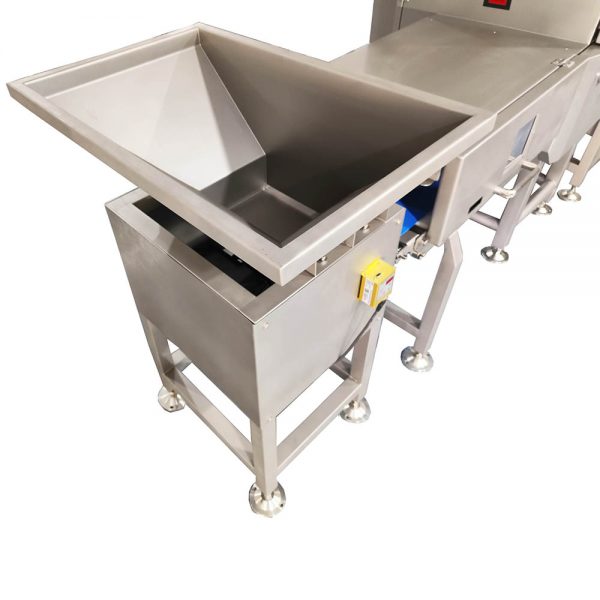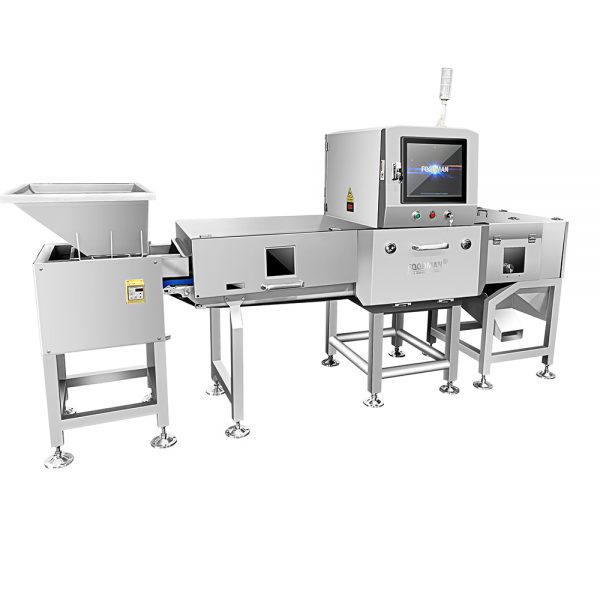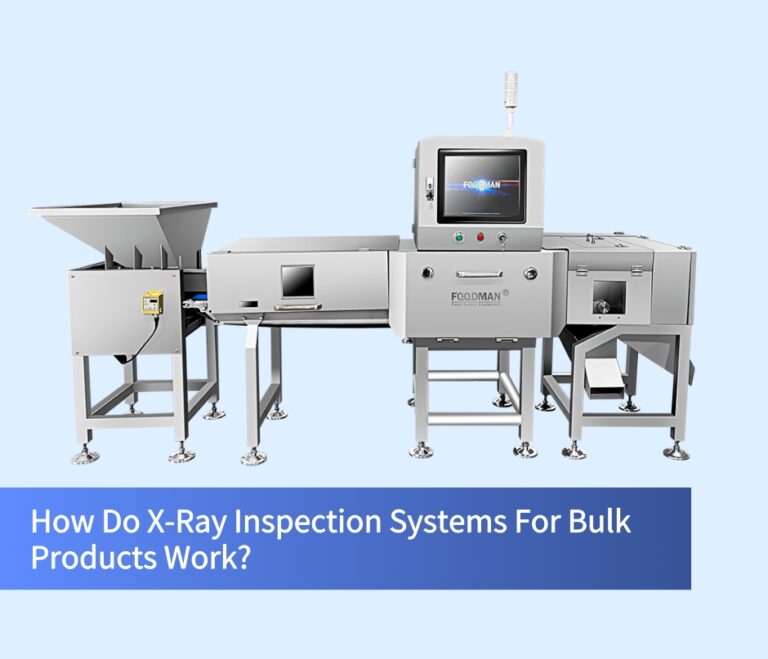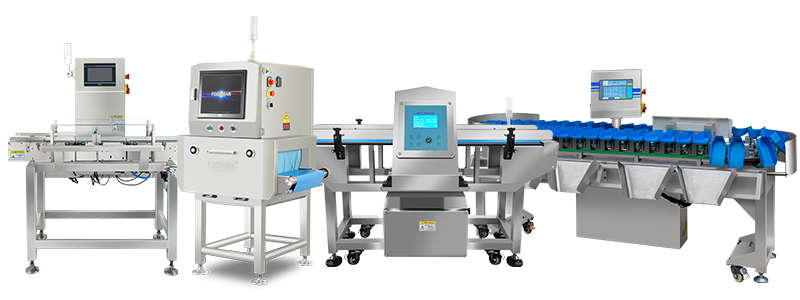Introduction
X-ray inspection systems are critical in ensuring product safety and quality within the bulk product industry. Understanding the intricate technology and working principles behind these systems is crucial in comprehending their significance and widespread application in various sectors.
I. How X-Ray Inspection Machines for Bulk Products Detect Contaminants
1. Understanding the Technology Behind X-ray Inspection System
X-ray inspection systems are an effective way of detecting foreign objects and contaminants in bulk products. This non-invasive technique uses high-energy electromagnetic radiation to penetrate materials and provide accurate and reliable results.
This advanced technology has become increasingly popular due to its accuracy and reliability in detecting even the smallest impurities. This technology can detect even the most minor impurities upon exploration, ensuring consumer safety and regulatory compliance.
2. Critical Components of X-Ray Inspection Systems
Key components, including X-ray generators, detectors, processors, and user interfaces, form the backbone of X-ray inspection systems. To fully understand the inspection process and the system’s precision, one must comprehend the roles of each component.
Detectors: X-ray detectors capture the X-ray signals passing through the products. It generates images highlighting any irregularities or impurities. These detectors are crucial for accurately identifying and flagging potential contaminants.
Processors: The processors analyze the data collected by the detectors, interpreting the X-ray images to distinguish between the product and any foreign particles.
Advanced algorithms and image processing techniques help identify variations in density and structure, enabling precise detection of contaminants.
User Interfaces: The user interfaces provide a means for operators to control and monitor the inspection process. The user interfaces allow operators to control and monitor the inspection process.
The interfaces allow the users to customize the inspection settings and receive real-time feedback on the scanning results. This helps to ensure that the X-ray inspection system operates efficiently and effectively.

3. How X-Ray Inspection Machines for Bulk Products Work
A detailed exploration of the functioning of X-ray inspection machines in the context of bulk products. We can reveal valuable insights into the scanning mechanisms they use and the specific parameters they analyze.
By delving into the intricate workings of these machines, we can better understand their effectiveness in detecting contaminants. At the same time, it helps us maintain the highest product quality standards.
Generation of X-rays: The process begins with generating high-energy X-rays by an X-ray generator.
The controlled emission of radiation from this generator is directed towards the bulk products that are being inspected.
Penetration of Materials: The generated X-rays pass through the scanned bulk products. The level of penetration depends on the density and composition of the materials. Different materials absorb and transmit X-rays to varying degrees.
Detection by Detectors: On the other side of the products, detectors capture the X-rays that have passed through. The sensors convert this information into a digital signal. And it creates a detailed image that represents the internal structure of the products.
Analysis of X-ray Images: The generated images are then processed by advanced algorithms and image processing techniques. These algorithms analyze variations in density and structure within the products. Any inconsistencies, foreign objects, or contaminants are deviations from the expected pattern.
Identification of Contaminants: The processed images are analyzed to detect and mark potential contaminants in the bulk products. The food x-ray machine can distinguish between the product itself. Foreign particles (metal, glass, stone, or certain types of plastic, etc) can be detected.
Alerts and Rejection: When the X-ray inspection system detects contaminants, it can trigger a warning or rejection mechanism. This may result in stopping the production line, diverting the affected products for further inspection, or signaling an operator to take corrective action.
Customizable Settings: X-ray inspection machines often come with customizable settings that allow operators to adjust the sensitivity and parameters of the inspection. This flexibility ensures that the system can be tailored to the specific requirements of different products and industries.
Real-time Monitoring: During the process, operators can monitor the inspection through user interfaces. This enables them to make immediate decisions based on the scanning results and ensure the overall efficiency of the inspection process.

4. Applications of X-Ray Food Inspection for Bulk Products
X-Ray food inspection for bulk products serves various applications in ensuring the safety and quality of food items. Some critical applications include:
Foreign Object Detection: X-Ray inspection effectively identifies and removes foreign objects such as metal, glass, or plastic contaminants from bulk food products.
Quality Assurance: X-ray inspection system helps maintain and ensure the overall quality of bulk products by detecting irregularities, inconsistencies, or defects in the food items.
Density Inspection: X-ray technology allows for measuring density variations within bulk products, ensuring uniformity and identifying abnormalities.
Mass Verification: X-ray inspection can verify the mass or weight of bulk products, ensuring that they meet specified standards and reducing the risk of underfilled or overfilled packages.
Packaging Integrity: It seems like this statement is related to quality control and ensuring the safety of products during packaging. By identifying issues such as seal defects, the integrity of the packaging can be checked to make sure that bulk products remain appropriately sealed and protected.
Contaminant Identification: X-ray inspection can differentiate between different materials, aiding in identifying contaminants and allowing for precise removal.
5. Advancements in X-ray technology for Bulk Product Analysis
Advancements in X-ray technology have significantly enhanced the capabilities of inspection systems for bulk products. Evaluating these advancements reveals the improved accuracy and efficiency of the latest X-ray technologies, contributing to a more robust and reliable product analysis process.

II. The relationship between the food industry and X-ray inspection systems for food products
1. Ensuring Compliance in the Food Industry
The food industry operates under stringent regulations, necessitating comprehensive quality control measures. X-ray inspection systems play a crucial role in verifying that food products meet essential safety standards and adhere to regulatory requirements.
2. Challenges and Limitations in X-Ray Inspection machine
While X-ray inspection systems are highly effective, they come with specific challenges and limitations. Understanding these constraints is crucial for implementing complementary inspection methods and maintaining a rigorous quality control process.
Challenges:
Image Interpretation: Analyzing X-ray images can be challenging and often requires trained professionals to interpret the results accurately. Subtle details may be easily overlooked, leading to errors in diagnosis or inspection.
Contrast Sensitivity: Achieving good contrast in X-ray images, especially for materials with similar densities, can be challenging. It may lead to difficulties in distinguishing between different substances.
Limitations
Material Penetration: X-rays have varying degrees of penetration depending on the material being inspected. Dense materials, like metals, absorb X-rays more effectively, making it challenging to inspect objects with differing densities.
Regulatory Compliance: There are strict regulations regarding the use of X-ray equipment, especially in medical and security applications. Adhering to these regulations and ensuring safety compliance can be challenging.
3. The Importance of Calibration and Maintenance
Regular calibration and maintenance of X-ray inspection systems are essential to guarantee precise and dependable outcomes. It is important to understand the significance of calibration and maintenance to ensure that these critical inspection tools operate efficiently and last for a long time.
4. Assessing the Cost-Effectiveness of X-Ray Inspection Systems
While the initial investment in X-ray inspection systems may seem significant, their long-term benefits outweigh the costs. Evaluating the cost-effectiveness of such techniques can highlight their potential to minimize product recalls. Not only to improve brand reputation but also to guarantee consumer safety.
III. Conclusion
In conclusion, X-ray inspection systems are indispensable for ensuring product safety and quality within the bulk product industry. X-ray machines are crucial in upholding industry standards and safeguarding consumer well-being.
As technology continues to evolve, the future of X-ray inspection systems remains bright. Easyweigh promises even more robust and efficient solutions for the ever-growing demands of the bulk product sector.





